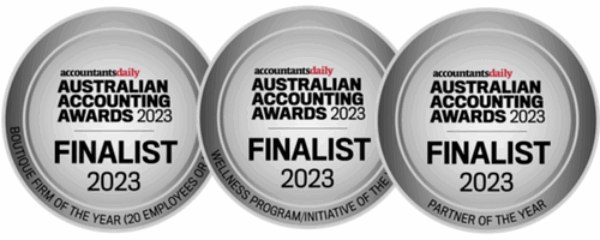As we move towards the end of financial year, it becomes important to look at your tax planning and ways that you can maximise your tax savings. These tax planning tips for individuals and businesses will help you cover off some important considerations before the end of the 2021-2022 financial year.
RECORD KEEPING
Taxpayers are required to keep a record of the deductible expenses. There are many benefits to keeping good records. As per the ATO below are some record-keeping tips:
- Keep all business records including income, expenses, bank, and other goods and services tax (GST) records for five years (although some records need to be kept longer).
- Records must contain enough information to calculate and support amounts claimed on activity statements and tax returns.
- Business records need to include all cash, online, EFTPOS, bank statements, and credit and debit card transactions.
- Check the tax invoices received for purchases that include GST are valid.
- Keep records that show when business purchases were used for private purposes – this will help work out the business portion that can be claimed as a deduction.
- Keep business records separate from personal records to avoid confusion.
- Take pictures of paper receipts to avoid faded records.
- Store a copy of all records electronically and have a backup system in place, where possible.
TAX TIPS FOR INDIVIDUALS AND BUSINESSES
COVID-19 Testing Tax Deductibility
Any COVID-19 tests, including Polymerase Chain Reaction (PCR) and Rapid Antigen Tests (RAT) you paid for in order to do your job or run your business will be tax deductible. If you have incurred expenses for COVID-19 tests, you should keep a record of those expenses.
Prepaying Expenses
You can claim a tax deduction for prepayments made (before 30 June) for an advance period of up to 12 months. Making prepayments accelerates the timing of tax deductions that would otherwise be claimable in the following financial year.
Superannuation Contributions
– Concessional contributions: an individual is able to make tax-deductible concessional contributions (inclusive of an employer’s SG contribution made on the individual’s behalf) of up to $27,500. Therefore, if the employer SG or salary sacrifice contributions are below $27,500 the individual can top up to the amount by making a personal member concessional contribution.
– Catch-up contributions: if your total superannuation balance is less than $500,000 you can make additional concessional contributions beyond the $27,500 cap if you did not fully utilise your available concessional contribution cap (previously $25,000 pa) in prior years commencing from 2018-2019. This strategy can be advantageous if you have been on maternity leave, or unpaid study leave.
Car Expenses
If you use your car for work purposes you can claim the costs related to this work travel but only if you own the car. There are two methods you can use to claim work-related car expenses:
- Cents per kilometre method: Your tax deduction is based on a set rate (currently 72 cents) for each business kilometre you travel, can claim up to a maximum of 5,000 kilometres per year. While no formal written evidence is required a diary of work-related travel (including kms travelled) will suffice.
Couples may jointly own and use a car for business/employment purposes. Where each person uses the vehicle separately, both can claim a deduction up to the 5,000 kms limit using the 72 cents per km method. - Logbook method: Your tax deduction under this method is based on the business use percentage of each car expense. The logbook must be kept for a continuous period of 12 weeks and must be updated every 5 years. You can claim all expenses that relate to the operation of the car at your percentage of business use – you will need to keep all receipts to justify your claim.
If you qualify as a small business entity and other eligibilities are met, you can potentially write off the cost of the car up to the car limit of $60,733 based on the business use percentage of the logbook.
You cannot claim the cost of normal trips between home and work, minor tasks on the way to and from work (for example, collecting the mail), travel back to work for a security call or if you work overtime and no public transport is available.
TAX TIPS FOR BUSINESSES
Small Business Immediate Asset Write-off and Temporary Full Expensing
Eligible business owners can continue to claim an immediate deduction for the business portion of the cost of an asset (machinery, vehicle, computer etc) up to 30 June 2023.
A full deduction can be taken for eligible expenditure incurred from 7.30 pm AEDT on 6 October 2020 until 30 June 2022. To be eligible for temporary full expensing the depreciating asset must be:
- New or second-hand (if it is a second-hand asset, your aggregated turnover is below $50 million) first held by you at or after 7.30 pm AEDT on 6 October 2020.
- First used or installed ready for use by you for a taxable purpose (such as a business purpose) between 7.30 pm AEDT on 6 October 2020 and 30 June 2023.
Unlike prior rules on instant asset write-offs, no limit applies to the cost of an asset under the full expensing rules. That is, an asset of any value may be fully deducted in the appropriate income year.
Any business with an aggregated turnover of less than $5 billion is eligible to use temporary full expensing. Certain large entities will have separate eligibility criteria.
Bad Debts
Reviewing your debtors and writing off any unrecoverable debts prior to the end of the financial year. To be able to claim a deduction the debt must still be in existence and must not have been waived or forgiven. There could potentially be several reasons debt is considered to be ‘bad’, the debtor cannot be traced or has died leaving insufficient funds or the debtor’s company is in liquidation.
You can speak with us about this process to ensure that it is performed correctly. Writing off bad debts can reduce your income tax, and generate a GST refund.
Deferring Income
A simple strategy to consider is to defer receipt of income until the following financial year, for example, receipt of bonuses, by postponing some year-end invoicing by a few days or weeks.
Payments To Workers
Deductions on payment to workers (whether they are employees, contractors, directors, etc) can only be claimed when the business has complied with its PAYG withholding and reporting obligations.
Family businesses or businesses that employ family members should be especially concerned with preparing for this, as they have additional obligations to ensure that they are correctly paying the right amount of tax. If they have received wages or been given allowances below the tax-free threshold, they will need to be registered as a withholder and a PAYG summary provided.
Your business should already be in the position to process payments through Single Touch Payroll, as it was made mandatory for all businesses to use from 1 July 2021.
Bonuses
With the holiday period approaching, businesses may be considering giving their staff a bonus. It is important to remember though, that bonuses are only deductible when they are actually incurred.
Meet Your Superannuation Liability Before 30 June
Businesses must ensure they are paying superannuation guarantee obligations to eligible employees. As superannuation is not tax-deductible until it has been paid, it is also important to ensure all superannuation payments owing are completed before 1 July, this is a great way of reducing your taxable income.
Super Guarantee Rate Changing To 10.5%
The super guarantee percentage rate payable by employers from 1 July 2022 is scheduled to increase to 10.5% (currently 10% for the 2021-22 financial year).
Digital Technologies Expenditure
As part of the federal budget 2021-22 measure, an eligible business with a group-wide turnover below $50 million will be able to deduct an additional 20% for eligible expenditure and assets acquired relating to support their digital adaptation. This expenditure is capped at $100,000.
This will apply to eligible expenditures incurred from 7:30 pm (AEDT) on 29 March 2022 until 30 June 2024. The eligible expenditure incurred by 30 June 2022 will be claimed in tax returns for the following income year.
Similar to digital adoption, but with no capped expenditure, businesses will be able to claim an additional 20% deduction on external training courses provided to their employees. However, note that there are some exclusions such as in-house or on-the-job training.
TIPS FOR INDIVIDUALS
Home Office Deductions
The ATO short-cut methodology for claiming home office expenses allows individuals to claim a deduction of 80 cents for each hour they worked from home. If the short-cut method is applied then no additional deductions can be claimed such as phone expenses, internet, depreciation, and utilities.
In limited circumstances taxpayers might be eligible to claim occupancy costs such as rates, or interest on a home loan. However, it is important to note that if you elect to claim occupancy costs there are CGT main residence exemption implications.
Taxpayers may elect to not use the shortcut method and claim deductions for home office expenses based on fixed-rate method and actual cost method.
Self-Education Expenses
These can be deducted provided there is a direct and provable link between the course undertaken and how you derive your income. For example, the expenditure leads to or is likely to increase income from your current income-earning activities in the future. The amount of self-education expenses allowable must not be greater than the excess of the expenses over $250.
Crystalise Capital Losses
This strategy is beneficial for the taxpayers who have sold shares or real property and expect significant capital gain. Implementing this strategy, a taxpayer with realized gains would sell their shares which has unrealized losses to make them realized. These realized losses will then be available to be offset against the capital gains to reduce or eliminate the tax liability.
Investment Property Expenses
Knowing about your investment property tax deductions will undoubtedly boost your tax return. Here are some useful tips to save tax on your investment property:
Depreciation report: If you owned or exchanged the contract for a rental property prior to 7:30 pm on 9 May 2017, you can claim a deduction on the decline in value of the depreciating assets.
If you bought it after this date you can still claim a deduction on the newly installed assets and also claim 2.5% of the construction cost per year from the time it was built, for 40 years. This is called a capital works deduction. We can help you to obtain this report if you haven’t already done so.
The other most typical expenses on the rental property include cleaning, pest control, gardening and lawn mowing, land tax, council rates, water rates, advertising fees, landlord insurance maintenance and repairs, body corporates fees and quantity surveyor reports fees, etc.
Walshs are committed to our clients’ needs and will assist you to maximise your tax deductions. We welcome you to contact us for specialist medical, or private taxation and accounting advice on 07 3221 5677, enquiries@walshs.com.au or book a meeting here.
By Amit Kumar – Accountant, Walshs Practice











